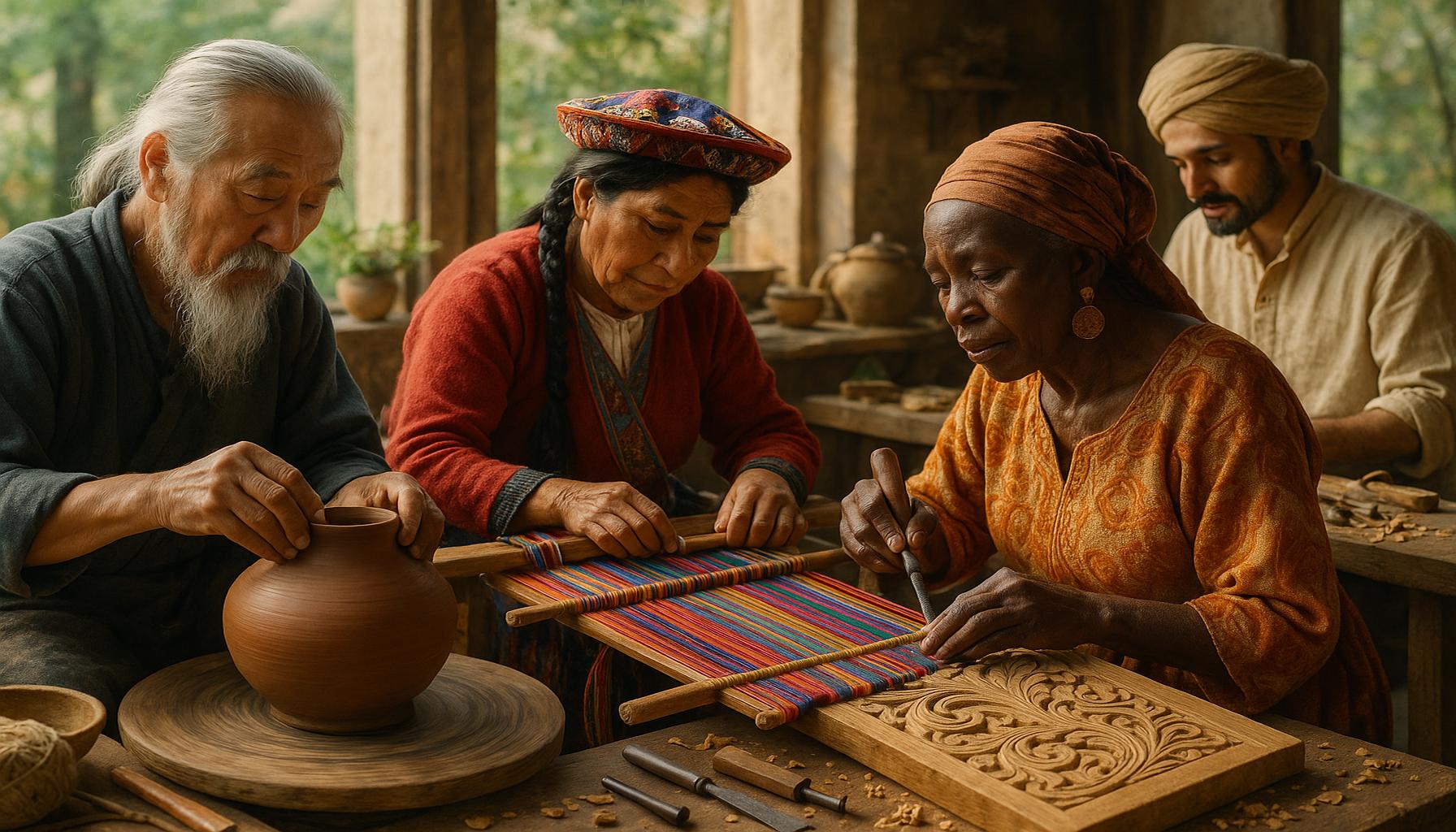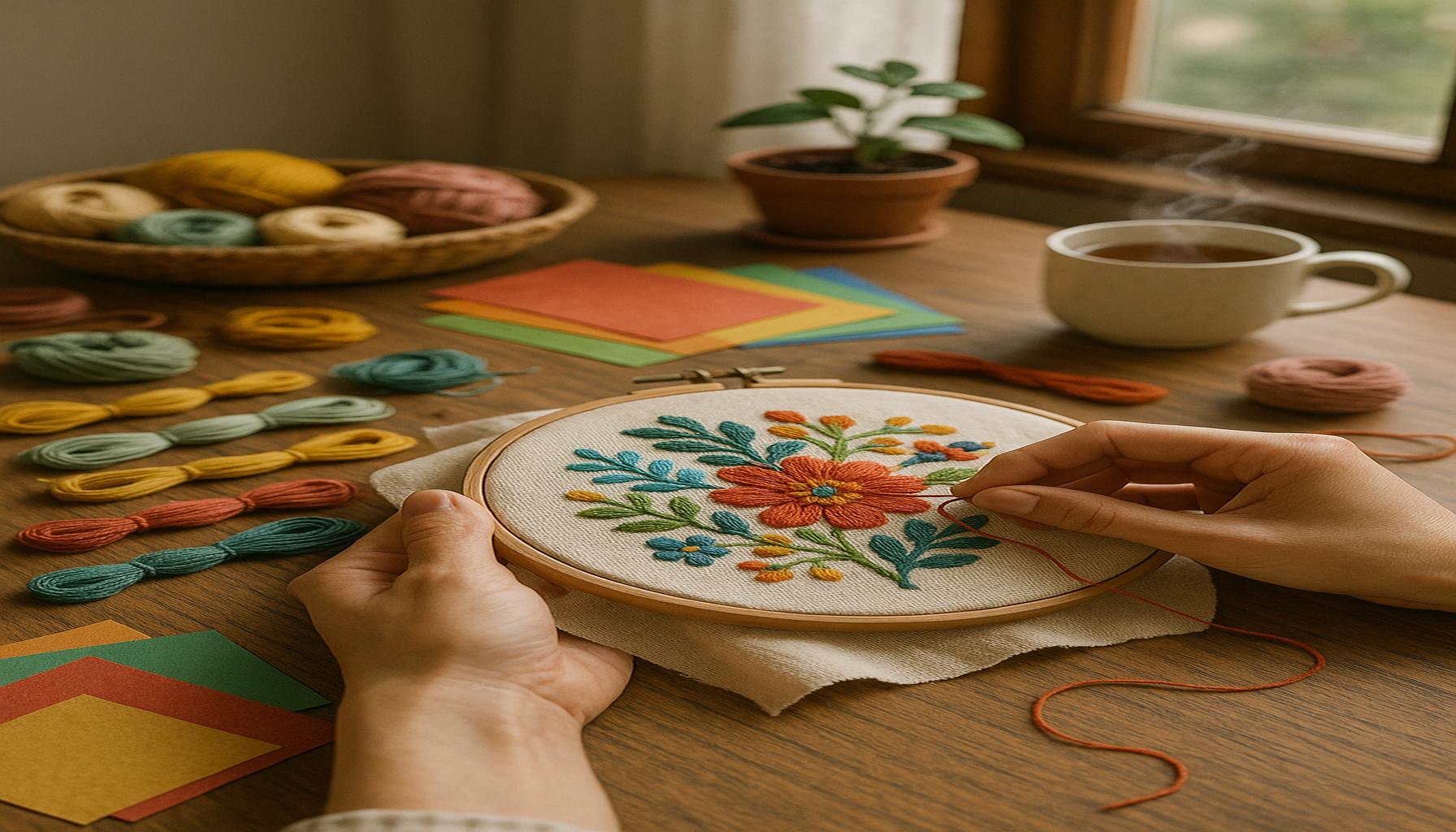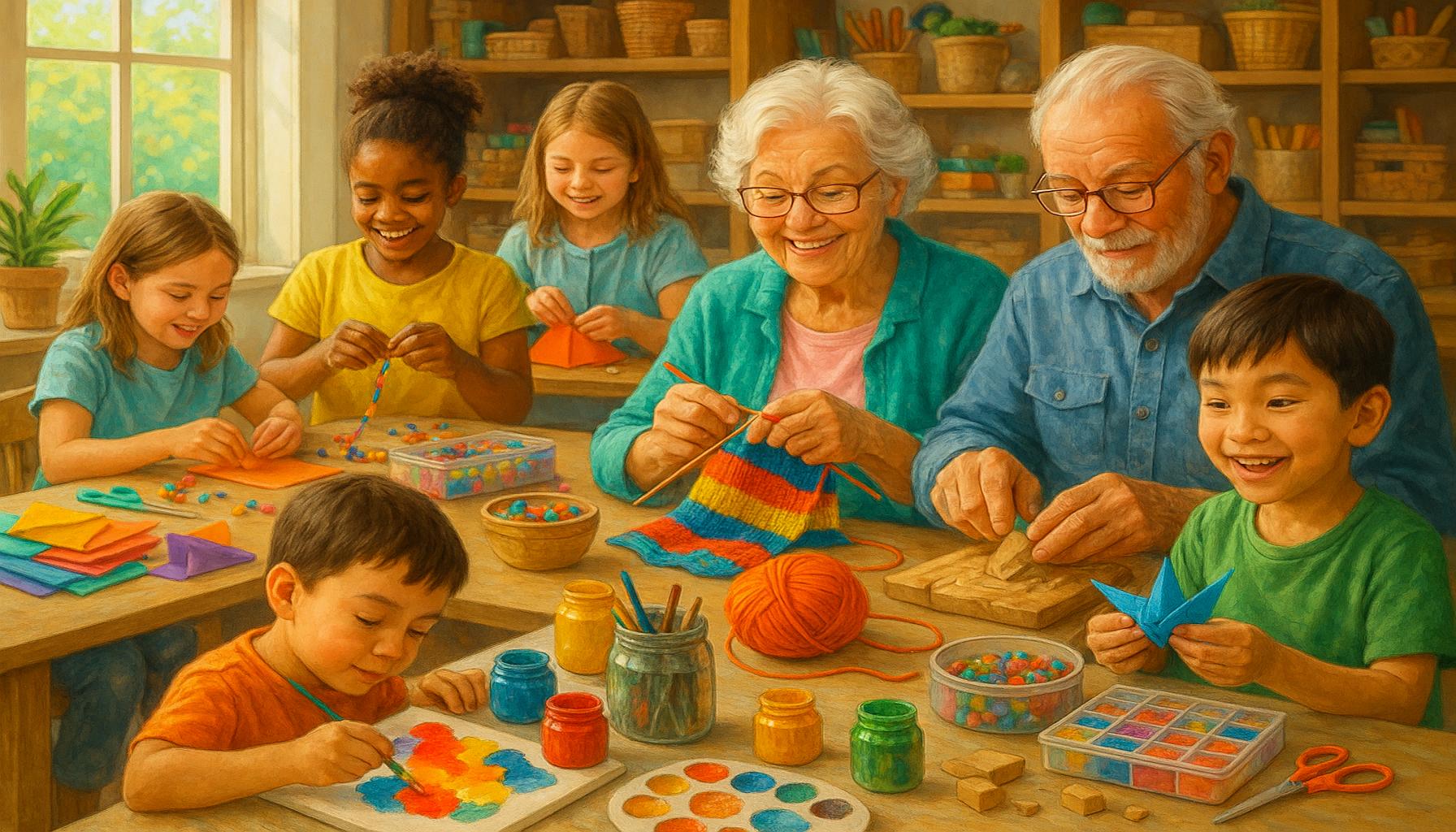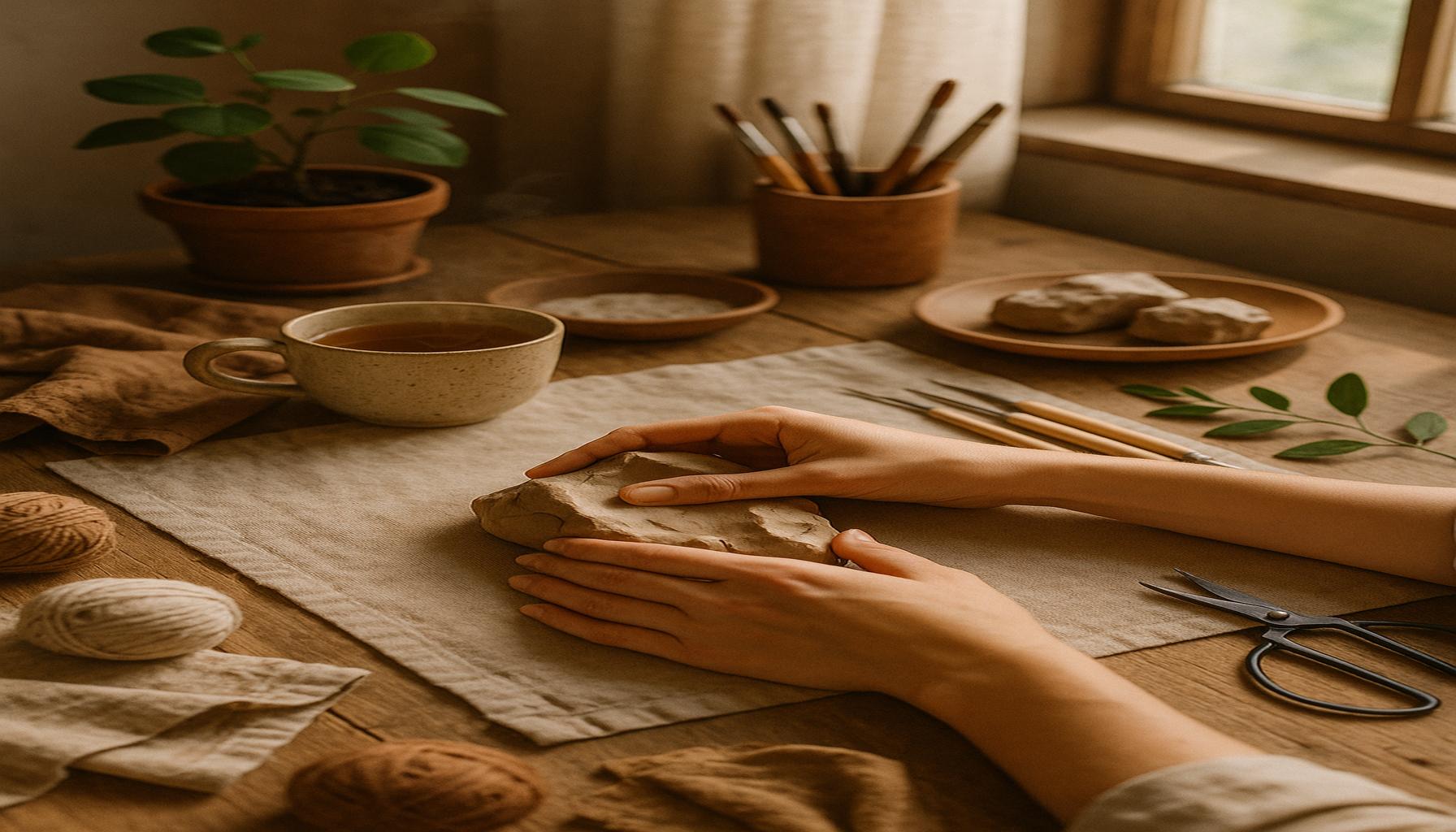Exploring the Global Crafting Movement: How Traditional Crafts Are Being Revived Worldwide

The Crafting Renaissance: Connecting Past and Present
In today’s fast-paced society, the global crafting movement serves as a remarkable antidote. Across continents, individuals are rediscovering the beauty of traditional crafts and breathing new life into age-old techniques. The resurgence of these crafts is not just a trend; it’s a cultural revival that fosters creativity and community. This revival can be traced through numerous channels, each contributing significantly to a renewed appreciation for artisanal work.
Key Drivers of the Crafting Revival
- Social Media Influence: Platforms like Instagram and Pinterest have created a vibrant community where artisans can showcase their work. From hashtags dedicated to archiving handmade goods to tutorials demonstrating techniques like embroidery or woodworking, these platforms have democratized access to crafting knowledge, fostering connections among creators who might otherwise remain isolated.
- Environmental Awareness: Many individuals are drawn to sustainable practices, favoring handcrafted goods over mass-produced items. For example, a consumer might choose to purchase a hand-woven basket made by local artisans instead of a plastic one from a factory—this choice not only supports the local economy but also aligns with values promoting sustainability and lower carbon footprints.
- Local Economies: Communities benefit economically as crafting supports local artisans and reduces dependence on global supply chains. Artisan markets and craft fairs have seen a resurgence, where local talent can sell their goods directly to customers, keeping money circulating within the community while celebrating unique, localized craftsmanship.
From the intricate pottery of Mexico to the historic weaving techniques in Appalachia, the crafting movement embraces diversity. Each nation reveals its unique artistic identity, promoting cultural heritage and storytelling. For example, pottery in Oaxaca, known for its stunning black clay vessels, often incorporates ancient methods and motifs that reflect the surrounding culture. By revisiting these crafts, artisans often tap into a lineage of skills passed down through generations, thereby preserving not only techniques but also the stories they carry.
Crafting as a Form of Resistance
Additionally, traditional crafting acts as a form of resistance against globalization. Individuals and communities find solidarity and empowerment in reclaiming these skills, crafting items that hold personal significance. This can manifest in subtle ways, such as the rise of DIY culture, where individuals opt to create handmade gifts or home decor instead of purchasing generic products. As the movement thrives, it encourages us to reflect on values ranging from sustainability to heritage—reminding ourselves that craftsmanship is not merely a hobby, but a meaningful practice of identity.
Join us as we delve deeper into the fascinating stories of artisans around the world who are shaping the future of crafting while honoring the past. Whether it’s a carpenter handcrafting furniture in Maine or a textile artist in New Mexico reviving traditional dyeing techniques, each narrative enriches the vibrant tapestry of the global crafting movement. By engaging with these artisans’ journeys, we can better appreciate the rich cultural landscapes they navigate and the intricate connections they forge through their craft.
DISCOVER MORE: Click here to learn about the healing benefits of crafting
The Roots of Resurgence: Unearthing Traditional Crafts
The revival of traditional crafts worldwide is not merely a nostalgic homage to the past, but rather a vibrant effort to reconnect with cultural identities and artisanal excellence that have stood the test of time. As communities increasingly acknowledge the significance of these crafts, several key factors contribute to their resurgence, providing a deeper understanding of this global phenomenon.
Community Engagement and Workshops
Many artisans are fostering community engagement by offering workshops or classes, inviting individuals to immerse themselves in ancient techniques. These hands-on experiences not only provide practical skills but also create spaces for sharing stories and cultural heritage. In the United States, craft schools and local makerspaces enable enthusiasts to explore everything from pottery and weaving to woodworking and metalworking. As individuals gather to learn, they forge connections that help to reinvigorate local culture and traditions.
Elaboration of Traditional Techniques
An essential aspect of reviving traditional crafts involves the elaboration and evolution of techniques. Artisans worldwide are finding innovative ways to adapt ancient methods for contemporary use. For example, in the heart of the Appalachian Mountains, craftspeople are blending traditional quilt-making patterns with modern fabrics and dyes, creating breathtaking quilts that pay homage to their roots while appealing to a new generation of consumers. Similarly, artisans in the American Southwest are incorporating modern design aesthetics into their pottery, harmonizing traditional forms with contemporary flavor, ultimately expanding the market for these handcrafted goods.
A Global Tapestry of Craftsmanship
- Textiles: Each region boasts its unique textile traditions, from the rich tapestry of Navajo rugs to the intricate batik of Indonesian sarongs. These crafts serve as diaries of community history, often depicting local tales and symbols through fabric.
- Woodworking: Craftsmanship in woodworking persists through generations, seen in the enduring popularity of Shaker furniture in the United States, which emphasizes simplicity and functionality rooted in traditional techniques.
- Ceramics: Around the globe, potters are rediscovering ancient glazing techniques, with artisans in North Carolina eluding modern methods to recreate traditional Southern folk pottery that reflects their connection to heritage and landscape.
As these examples demonstrate, the revival of traditional crafts is more than a mere artistic endeavor; it is a self-affirming movement deeply anchored in history and identity. Beyond the aesthetics, handmade goods express the underlying stories of those who create them, encapsulating a collective memory that resonates with consumers seeking authenticity in a world increasingly dominated by mass production.
Through this crafting renaissance, individuals are reclaiming their narratives while enriching their communities. In the next segment, we will delve into how traditional craftsmanship serves as a critical vehicle for social change, fostering inclusivity and empowering marginalized artisans to reclaim their voice in today’s marketplace.
| Category | Description |
|---|---|
| Cultural Heritage | Preservation of skills that have been passed down through generations, promoting cultural identity. |
| Sustainable Practices | Emphasizes the use of eco-friendly materials, reducing environmental impact while supporting local economies. |
The global crafting movement encompasses a remarkable renaissance of traditional skills that have often been overshadowed by mass production. As interest in unique, handcrafted items grows, artisans worldwide are revitalizing their local crafts, thus reconnecting communities with their rich cultural heritage. This revival is not merely about aesthetic value; it’s deeply tied to the resurgence of community identities and the preservation of local histories that might otherwise be lost.Moreover, many crafts now adopt sustainable practices that recognize the importance of ecological balance. By utilizing natural materials and ancient techniques that avoid harmful chemicals, artisans contribute to a healthier planet while simultaneously fostering economic opportunities within their communities. This convergence of craft and sustainability attracts not only environmentally conscious consumers but also those seeking authenticity and story in their purchases. The movement serves as a reminder of the beauty and intricacy of human creativity, pushing us all to appreciate the craftsmanship involved in everyday objects.
DISCOVER MORE: Click here to dive deeper
Crafting a New Narrative: Social Change through Artisanal Revival
The resurgence of traditional crafts is intricately linked to a broader narrative of social change and empowerment. As artisans reclaim their heritage and redefine their roles within their communities, they are simultaneously paving new pathways for inclusivity and economic opportunities. This evolution of crafting not only nurtures the spirit of tradition but acts as a catalyst for social innovation.
Empowerment of Marginalized Artisans
Many traditional crafts are rooted in communities often overlooked in mainstream society. Women, in particular, have played crucial roles in preserving these traditions. Initiatives worldwide are championing female artisans, creating avenues to enhance their skills and offering platforms to showcase their creations. For instance, organizations such as Nest are dedicated to fostering economic independence for women in artisanal sectors, from weaving to jewelry-making. By providing access to training, resources, and fair trade markets, these efforts empower women to transcend societal barriers and achieve financial self-sufficiency.
In Guatemala, the IKAT program offers intensive textile workshops specifically aimed at women, illustrating how skill development can transform lives. Participants not only learn to create intricate woven fabrics but also gain valuable business acumen, enabling them to market their work effectively and assert their cultural narratives in the global marketplace.
The Intersection of Sustainability and Craftsmanship
The global craving for sustainable practices has found a loving ally in the crafting movement. Many artisans emphasize eco-friendly techniques, channeling natural resources responsibly and ensuring that their work reflects a commitment to environmental stewardship. Crafts such as traditional basket weaving in the African communities leverage local materials while preserving ecological integrity. As consumers thus become increasingly aware of the environmental impacts of their purchases, handcrafted goods that emphasize sustainability gain preference and visibility.
In the United States, the Slow Fashion movement has encouraged consumers to seek out garments that prioritize craftsmanship and ethical production. Think artisans creating handmade clothing or accessories in small batches, contrasting starkly with fast fashion’s mechanized output. This echoes the larger conversation on sustainability where local artisans become pivotal players, advocating for a return to time-honored practices that naturally prioritize the environment.
Fostering Cross-Cultural Exchange
The revival of traditional crafts also bridges cultural divides, fostering collaboration and understanding among diverse groups. Global festivals and fairs, such as the Smithsonian Craft Show in Washington, D.C., draw artisans from various backgrounds to share their craft, experiences, and collective wisdom. This platform showcases unique cultural narratives while also encouraging artisans to adopt ideas and techniques from one another, ultimately enriching their craft.
Such cross-cultural exchanges are not only pivotal for fostering respect and appreciation of diverse traditions but also drive innovation. As artisans are exposed to new methods and inspirations, they can evolve their practices while staying rooted in their heritage. This interconnectedness is a defining feature of the global crafting movement, marrying tradition with contemporary creative impulses.
As traditional crafts continue to weave their vibrant threads through various societal fabrics, they emerge as much more than artistic expressions; they become threads of resilience, empowerment, and connection, beckoning all to participate in the rich tapestry of global craftsmanship.
DIVE DEEPER: Click here to discover how creativity enhances mental well-being
Conclusion: Weaving a Tapestry of Tradition and Innovation
The global crafting movement stands as a testament to humanity’s intrinsic need for connection, creativity, and cultural identity. As we have explored, the revival of traditional crafts is not merely about preserving history; it embodies a vibrant fusion of social empowerment, sustainability, and cross-cultural exchange. Each artisan, equipped with age-old techniques and newfound skills, contributes to a dynamic narrative that challenges modern consumerism and promotes a more ethical and connected world.
With initiatives like Nest and the IKAT program leading the way, we witness how marginalized artisans, particularly women, harness their cultural heritage to forge paths toward economic independence. These efforts are crucial in dismantling barriers and creating a more inclusive society where everyone can thrive. Additionally, as the demand for sustainable practices grows, traditional crafts are not only preserving cultural legacies but also promoting environmental stewardship, emphasizing the importance of responsible consumption in today’s world.
Furthermore, the excitement generated by global festivals and fairs showcases the power of crafting as a bridge between cultures, allowing artisans to share stories and techniques, adapting and evolving in a contemporary context. This collaborative spirit serves to enrich both local and global craftsmanship, ensuring that the revival of these traditions is both relevant and transformative.
In conclusion, as we consider the intricate threads woven into this global landscape, the resurgence of traditional crafts beckons us to engage deeply with our own narratives, encouraging exploration and appreciation of the artisans’ work. By supporting this movement, we not only honor the past but actively participate in shaping a sustainable and inclusive future. Let us embrace this opportunity to connect with the stories and skills of artisans worldwide, celebrating the rich tapestry of global craftsmanship.


